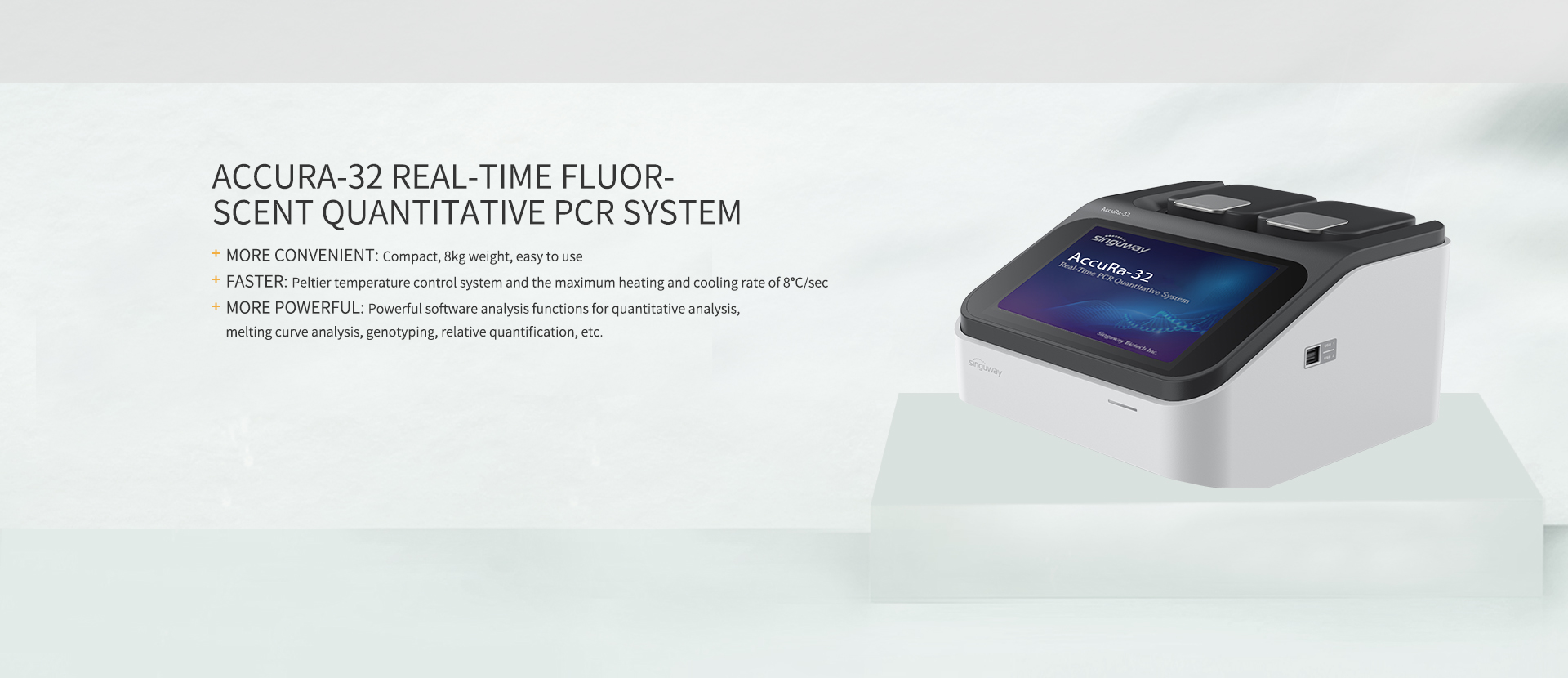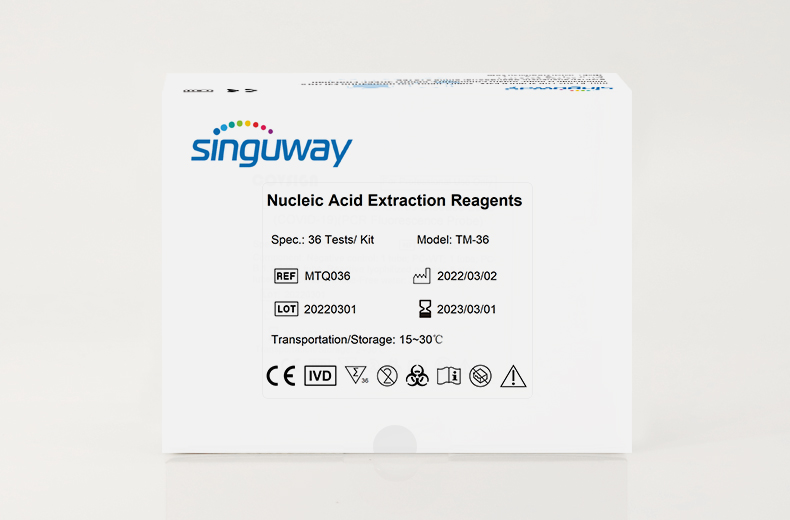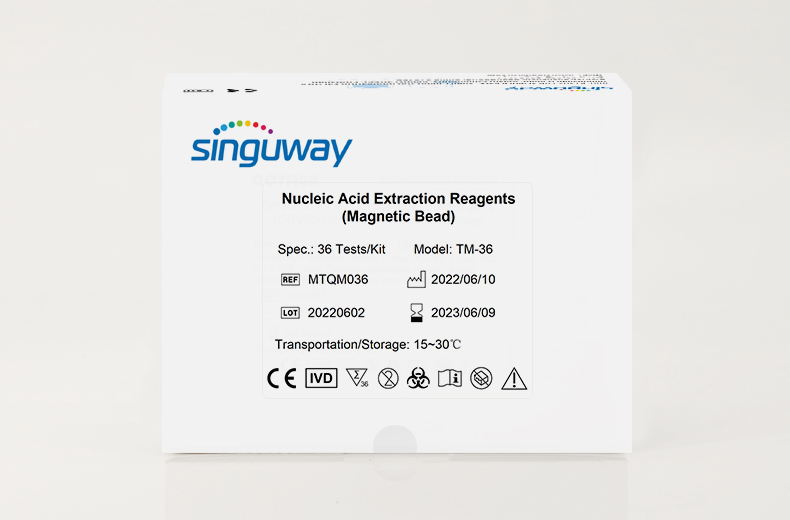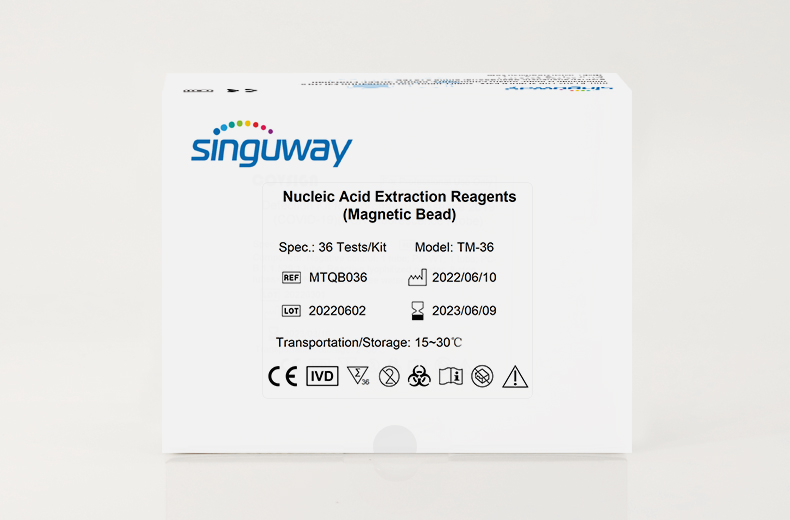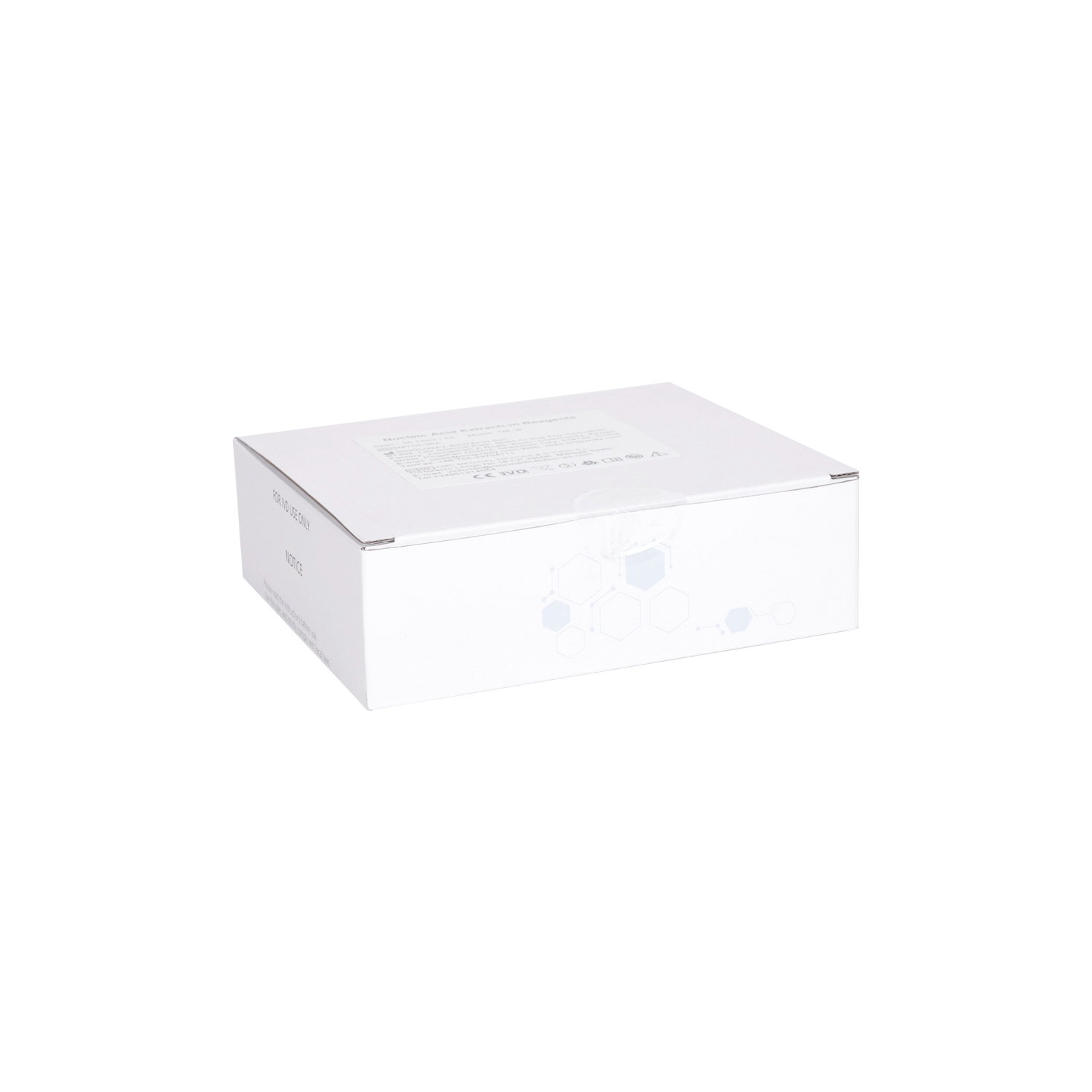
- CrystalDry Tech
- Nucleic Acid Extraction Reagent
-
Human PCR Detection Kit
Human Immunodeficiency Virus-1 (HIV-1) 2019-nCoV, Influenza A Virus and Influenza B Virus Hepatitis B Virus (HBV) Hepatitis C Virus (HCV) High-risk Human Papillomavirus (HPV) Human MTHFR Gene Polymorphism Coronavirus Disease 2019 (COVID-19) Monkeypox Virus (MPV) Mycobacterium Tuberculosis Plasmodium falciparum Zika Virus Adenovirus Adenovirus 41 High-risk Human Papillomavirus (HPV) (Typing) Dengue Virus Human Immunodeficiency Virus-1 (HIV-1) (Ultra-sensitive) Chlamydia Trachomatis Neisseria Gonorrhoeae Ureaplasma Urealyticum STD 12 Multiplex Dengue/Zika/Chikungunya Virus Multiplex Respiratory Diseases Multiplex
- Veterinary PCR Detection Kit
- Salmonella/Shigella (SS) Testing Tube
- Sample Processing
- SARS-CoV-2 Antigen Tests
TM-36 Series Extraction Reagent (Magnetic Bead Method)
Main Parameters
|
Product |
Regular Nucleic Acid Extraction Reagent |
Sputum Nucleic Acid Extraction Reagent |
Whole Blood Nucleic Acid Extraction Reagent |
Bacterial Nucleic Acid Extraction Reagent |
Veterinary Nucleic Acid Extraction Reagent |
|
|
Ref No. |
MTQ036 |
MTQP036 |
MTQB036 |
MTQM036 |
MTQ036A |
|
|
Specification |
36 Tests/Kit |
|||||
|
Components |
Quadruple Cuvette |
36 |
36 |
36 |
36 |
36 |
|
Elution Cuvette |
36 |
36 |
36 |
36 |
36 |
|
|
Magnetic Rod Sleeve |
36 |
36 |
36 |
36 |
36 |
|
|
Sputum Liquefier |
/ |
0.9mL/tube×2 |
/ |
/ |
/ |
|
|
Proteinase K |
/ |
/ |
720μL/tube×1 |
/ |
720μL/tube×1 |
|
|
Specimen Requirements |
Pharyngeal swabs, nasal swabs, oropharyngeal/oral secretions, and nasal/nasopharyngeal secretions, serum, plasma, and cervical exfoliated cells. |
Sputum |
Fresh or frozen whole blood |
Pharyngeal swabs, nasal swabs, nasopharyngeal secretions, serum, plasma, and cervical exfoliated cells. |
Animal samples such as whole blood, serum, plasma, saliva, nasal fluid, urine, oral and nasal swabs, environmental gauze, fecal swabs, animal tissues, feed pellets, etc. |
|
|
Storage Conditions and Validity |
The kit is transported and stored at 15-30℃ and valid for 12 months. |
The kit can be transported at room temperature (15~30℃). The Sputum liquefier can be stable for 12 months stored at 2~30℃. |
The kit can be transported at room temperature (15~30℃). The Proteinase K can be stable for 12 months stored at 2~30℃. |
The kit is transported and stored at room temperature (15-30℃) and valid for 12months. |
The kit is transported and stored at 10-30℃ and valid for 12 months. |
|
|
Extraction Time |
13-20 mins |
|||||
|
Applicable Instruments |
Singu20 nucleic acid extractor by Singuway. |
|||||
|
Applicable Test Items |
Available for all Singuway human test items. |
Available for all Singuway veterinary test items. |
||||
|
Applications |
RT-PCR, cDNA synthesis, Northern/ dot/ slot blot analysis, Microarrays, RNAseq |
Clinical in vitro tests ofanimals |
||||
Features
l Sputum and whole blood nucleic acid extraction reagents: better performance than conventional reagents for complex samples
l Sputum samples liquefied with Proteinase K yielded high concentrations of intact genomic DNA and the best results for TB nucleic acid detection in Proteinase K-treated samples after amplification.
l Specifically made to be paired with Singuway’s automated instruments. Maximize the kits by combining them with an instrument by Singuway for less manual time, consistent results, and reproducible recovery of high-quality DNA/RNA with less variation in each run.
l 13-20 minutes to complete the whole process of DNA/RNA extraction.
l Whole blood DNA yield: 10ng/μL~50ng/μL×100μL, sputum DNA yield: 10ng/μL~150ng/μL×100μL
Product Performance Indicators
|
Product Name |
Regular Nucleic Acid Extraction Reagent |
SputumNucleic Acid Extraction Reagent |
Whole Blood Nucleic Acid Extraction Reagent |
BacterialNucleic Acid Extraction Reagent |
Veterinary Nucleic AcidExtraction Reagent |
|
Ref No. |
MTQ036 |
MTQP036 |
MTQB036 |
MTQM036 |
MTQ036A |
|
Extraction Sensitivity |
The amplification sensitivity reached ≥100 copies/mL. |
/ |
/ |
The amplification sensitivityof200 μL of novel coronavirus nucleic acid standard material was ≥100 copies/mL. |
/ |
|
Average Yield |
/ |
Extract 200μL sputumsample with≥1 μg of nucleic acid. |
≥1μg of genomic DNAper100μL of blood |
/ |
/ |
|
Nucleic Acid Purity |
A260/A280ratio: 1.5~2.2. |
OD260/OD280ratio: 1.7~2.1. |
OD260/OD280ratio: 1.6~2.1. |
A260/A280ratio: 1.5~2.2. |
OD260/OD280 ratio:1.5 to 2.2. |
|
Nucleic AcidExtraction Recovery Rate |
90%~110% |
≥90% |
≥ 85% |
90%~110% |
90%~110% |
|
Precision |
The same sample was extracted 10 times with the same batch of reagents. Intra-batch Precision CV≤5%. |
The coefficient of variation of in-batch concentration is ≤10%. |
The coefficient of variation of in-batch concentration is ≤10%. |
/ |
ct value, intra-batch CV value≤5%. |
|
DNA Integrity |
/ |
/ |
/ |
/ |
The extracted DNA bands were single, clear, with appropriate fragment size and no trailing bands or obvious degradation. |
 Language
Language 中文
中文 English
English espa?ol
espa?ol
